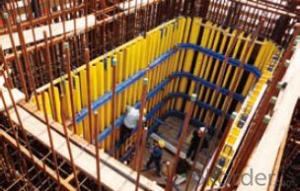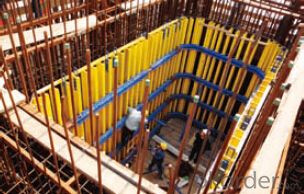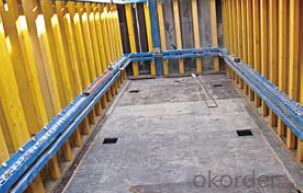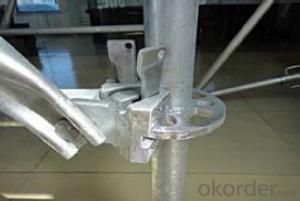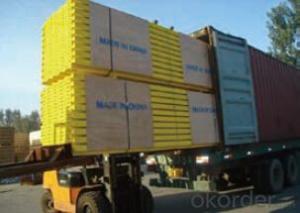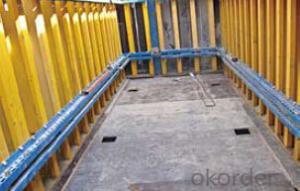Shaft-platform system for Formwork and Scaffolding
- Loading Port:
- Tianjin
- Payment Terms:
- TT OR LC
- Min Order Qty:
- 50 m²
- Supply Capability:
- 1000 m²/month
OKorder Service Pledge
Quality Product, Order Online Tracking, Timely Delivery
OKorder Financial Service
Credit Rating, Credit Services, Credit Purchasing
You Might Also Like
Shaft Platform
As operating platform, the shaft platform is mainly used in the concrete pouring of elevator shaft,
equipment shaft, stair shaft of high-rise building and so on.
Characteristics:
◆ The length of shaft beam is adjustable.
◆ Flexible structure makes lifting easier.
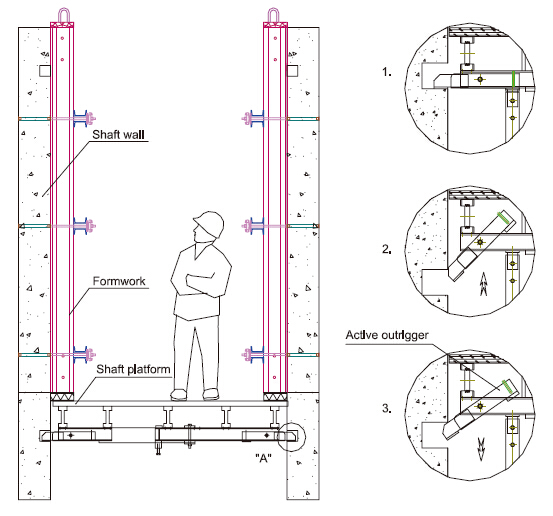
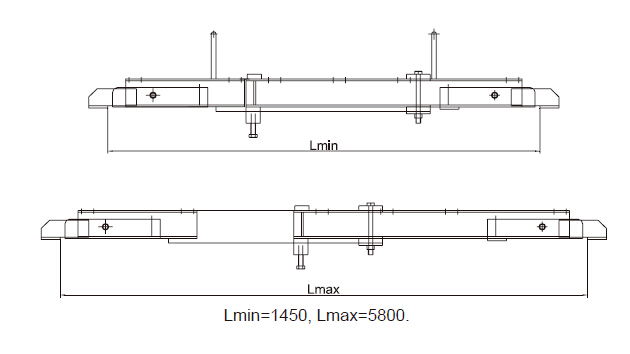
- Q: How does steel formwork handle formwork repositioning?
- Steel formwork is known for its strength and durability, making it an ideal choice for projects that require frequent formwork repositioning. When it comes to handling formwork repositioning, steel formwork offers several advantages. Firstly, steel formwork is designed to be easily disassembled and reassembled, making it highly adaptable to changing project requirements. This means that the formwork can be quickly and efficiently relocated to accommodate changes in design or construction plans. Steel formwork systems often consist of modular components that can be easily interchanged, allowing for seamless formwork repositioning without compromising structural integrity. Secondly, steel formwork is known for its high load-bearing capacity. This makes it suitable for supporting heavy concrete loads during the construction process. When formwork needs to be repositioned, steel formwork systems can withstand the stresses and strains associated with lifting and moving, ensuring that the formwork remains stable and secure throughout the repositioning process. This high load-bearing capacity also allows for the use of larger formwork panels, reducing the number of components that need to be repositioned, thus saving time and labor. Additionally, steel formwork offers excellent dimensional stability. This means that once the formwork is repositioned, it maintains its original shape and dimensions, ensuring accurate and consistent concrete placement. This is particularly important for projects that require precise alignment and uniformity in the finished structure. Furthermore, steel formwork is highly resistant to warping, bending, and deformation, even when subjected to multiple repositioning cycles. This ensures that the formwork remains in optimal condition, reducing the need for repairs or replacements and minimizing downtime on the construction site. In conclusion, steel formwork is well-suited for handling formwork repositioning due to its adaptability, high load-bearing capacity, dimensional stability, and resistance to warping. These qualities make it a reliable and efficient choice for construction projects that require frequent formwork adjustments.
- Q: Are there any limitations to the size of concrete pours with steel formwork?
- Steel formwork poses limitations for large concrete pours due to various factors. Firstly, the weight and size of the steel formwork itself can be challenging. Maneuvering heavy and large steel formwork can prove difficult, particularly for sizable pours. Moreover, additional supports and bracing are necessary for larger pours. To prevent bending or collapsing under the concrete's weight, steel formwork often requires reinforcement and bracing. This increases the installation's complexity and cost. Additionally, the size and weight of the concrete become limiting factors. Curing large concrete pours generates substantial heat, potentially causing thermal cracking and durability issues. Steel formwork may not endure the intense temperatures and pressures produced by substantial volumes of concrete, leading to deformation or failure. Furthermore, the logistics and transportation of large concrete pours present challenges. Limited availability of concrete trucks and pumps capable of transporting significant volumes can result in delays and escalated expenses. In summary, steel formwork is suitable for diverse concrete pours, but its usage for larger and complex projects necessitates careful evaluation. Assessing project-specific requirements and constraints is crucial to determine the feasibility and appropriateness of employing steel formwork for sizable concrete pours.
- Q: What are the common safety precautions when working with steel formwork in high winds?
- When working with steel formwork in high winds, there are several common safety precautions that should be followed to ensure the safety of workers and the integrity of the formwork. 1. Secure the formwork: It is essential to properly secure the steel formwork to prevent it from being blown away by strong winds. This can be achieved by using appropriate anchoring methods such as tie-downs, braces, or clamps. Adequate bracing should be installed at regular intervals to provide additional stability. 2. Regular inspections: Regular inspections of the formwork should be conducted before, during, and after high wind events. This includes checking for any signs of damage or weakness in the formwork structure, loose connections, or compromised anchoring. Any issues identified should be addressed promptly to prevent accidents or further damage. 3. Reinforce the formwork: In areas with high wind activity, it may be necessary to reinforce the steel formwork to withstand the stronger forces. This can be done by adding additional support beams, cross-bracing, or wind-resistant features to the structure. The reinforcement should be designed and implemented by a qualified engineer to ensure its effectiveness. 4. Provide personal protective equipment (PPE): Workers should be provided with appropriate personal protective equipment to protect them from potential hazards during high wind conditions. This may include safety helmets, goggles, gloves, and high-visibility clothing to enhance visibility for other workers and equipment operators. 5. Monitor weather conditions: Regular monitoring of weather conditions is crucial when working with steel formwork in high winds. If there are predictions or signs of strong winds, work should be temporarily suspended until the wind speeds decrease to safe levels. It is important to have a reliable weather monitoring system in place to stay informed about changing weather conditions. 6. Training and communication: All workers involved in working with steel formwork should receive proper training on the safety precautions and procedures to follow during high wind situations. Clear communication channels should be established to ensure that workers are aware of any changes in weather conditions or safety protocols. By following these common safety precautions, the risks associated with working with steel formwork in high winds can be minimized, ensuring the well-being of workers and the successful completion of the construction project.
- Q: How does steel formwork contribute to the overall sustainability of a structure?
- Steel formwork contributes to the overall sustainability of a structure in several ways. Firstly, steel is a highly durable material that can withstand extreme weather conditions and resist corrosion. This means that steel formwork can be reused multiple times, reducing the need for new formwork to be manufactured for each construction project. By reducing the demand for new materials, steel formwork helps to conserve natural resources and minimize the environmental impact associated with the extraction and production of new materials. Additionally, steel formwork allows for efficient and precise construction processes. Its strength and rigidity enable it to support heavy loads and provide stability during concrete pouring. This facilitates faster construction time, reducing labor costs and minimizing the use of construction equipment. The efficiency and precision provided by steel formwork contribute to the overall sustainability of a structure by conserving energy and reducing waste. Moreover, steel formwork is a versatile and flexible option that can be easily adjusted or modified to meet changing construction needs. This adaptability allows for the reuse of formwork in different projects, reducing the amount of waste generated. Furthermore, steel formwork can be recycled at the end of its lifespan, contributing to the circular economy by reducing landfill waste and minimizing the environmental impact associated with disposal. Overall, steel formwork promotes sustainability in construction by reducing the need for new materials, conserving energy, minimizing waste, and facilitating efficient construction processes. Its durability, reusability, adaptability, and recyclability make it an environmentally friendly choice that contributes to the long-term sustainability of structures.
- Q: How does steel formwork impact the overall project budgeting?
- The overall project budgeting can be significantly affected by steel formwork. Although the initial cost of steel formwork may be higher compared to wood or plastic formwork, it offers several advantages that can help offset the initial investment. To begin with, steel formwork is renowned for its durability and longevity. Unlike wood or plastic formwork, steel formwork can be reused multiple times without compromising its structural integrity. This reusability factor reduces the need for frequent replacement or repair, resulting in long-term cost savings. Furthermore, steel formwork provides a superior finish to concrete structures. The smooth and even finish achieved with steel formwork minimizes the need for additional surface treatments or finishing work, leading to cost savings. Moreover, steel formwork offers increased strength and stability, enabling the construction of larger and more complex structures. This eliminates the necessity for additional support systems or reinforcements, which can be costly and time-consuming. Additionally, steel formwork is easy to assemble and dismantle, resulting in faster construction times. The quick turnaround time reduces labor costs and allows for earlier project completion, which is particularly advantageous for time-sensitive projects. Lastly, steel formwork is resistant to adverse weather conditions, such as moisture or extreme temperatures, which can negatively impact the effectiveness and lifespan of the formwork. This resistance reduces the risk of formwork damage and replacement costs, contributing to cost savings. In conclusion, while steel formwork may have a higher upfront cost, its durability, reusability, high-quality finish, strength, ease of use, and resistance to weather conditions can all contribute to cost savings in terms of reduced labor, material, and maintenance expenses. Therefore, steel formwork can positively impact the overall project budgeting.
- Q: Can steel formwork be used for both horizontal and vertical structures?
- Yes, steel formwork can be used for both horizontal and vertical structures. Steel formwork is versatile and can be easily adjusted and assembled to meet the requirements of different construction projects, whether they involve horizontal slabs or vertical walls and columns. Its strength and durability make it suitable for a wide range of applications in various types of structures.
- Q: Can steel formwork be used for both vertical and inclined concrete placements?
- Yes, steel formwork can be used for both vertical and inclined concrete placements. Steel formwork is known for its durability and flexibility, making it suitable for various types of concrete placements, including both vertical and inclined surfaces. It provides the necessary structural support and ensures a smooth finish for the concrete, making it a preferred choice for construction projects requiring different angles and inclinations.
- Q: Can steel formwork be used for sports complex construction projects?
- Yes, steel formwork can be used for sports complex construction projects. Steel formwork is a versatile and durable option for creating the desired shapes and structures required for sports complexes. It can be used to construct various elements of the complex, such as walls, columns, beams, and slabs. Steel formwork offers high strength and stability, allowing for larger spans and higher load-bearing capacity, which are often necessary for sports facilities. Additionally, the smooth finish achieved with steel formwork helps to create a professional and aesthetically pleasing appearance. Overall, steel formwork is a suitable choice for sports complex construction projects due to its strength, flexibility, and ability to create complex structures efficiently.
- Q: Is steel formwork suitable for projects with high architectural demands?
- Yes, steel formwork is suitable for projects with high architectural demands. Steel formwork offers excellent strength, durability, and versatility, making it ideal for complex architectural designs. It allows for precise and intricate detailing, ensuring high-quality finishes and meeting the unique requirements of such projects. Additionally, steel formwork can be easily customized and adjusted, enabling architects to achieve their desired aesthetic outcomes.
- Q: How does steel formwork handle concrete vibration and air entrapment?
- Steel formwork is widely recognized for its effectiveness in managing concrete vibration and reducing air entrapment during pouring and curing. To begin with, the strength and rigidity of steel formwork make it capable of withstanding the intense vibrations caused by compacting concrete. When poured into steel formwork, the formwork acts as a barrier, preventing excessive movement or deformation that could lead to the creation of voids or air pockets. This ensures that the concrete is evenly distributed and compacted throughout the structure. Moreover, steel formwork is designed with tight joints and smooth surfaces, which aids in minimizing air entrapment. The joints are securely sealed to prevent any leakage that could result in air getting trapped within the concrete. This is particularly crucial as air pockets have the potential to weaken the structural integrity and durability of the concrete. The smooth surfaces also facilitate the smooth flow and consolidation of the concrete, reducing the likelihood of air entrapment. Additionally, steel formwork can be easily customized and adjusted to meet the specific requirements of the construction project. This allows for precise and accurate placement of the formwork, ensuring that the concrete is poured and compacted in the desired manner. By maintaining complete control over the formwork, the risk of air entrapment can be minimized, resulting in a more durable and reliable concrete structure. In conclusion, steel formwork is an excellent choice for managing concrete vibration and air entrapment. Its strength, rigidity, tight joints, and smooth surfaces provide the necessary stability and control during the pouring and compacting process. By utilizing steel formwork, construction professionals can guarantee that the concrete is properly consolidated and free from air pockets, leading to a high-quality and long-lasting structure.
Send your message to us
Shaft-platform system for Formwork and Scaffolding
- Loading Port:
- Tianjin
- Payment Terms:
- TT OR LC
- Min Order Qty:
- 50 m²
- Supply Capability:
- 1000 m²/month
OKorder Service Pledge
Quality Product, Order Online Tracking, Timely Delivery
OKorder Financial Service
Credit Rating, Credit Services, Credit Purchasing
Similar products
Hot products
Hot Searches
Related keywords
